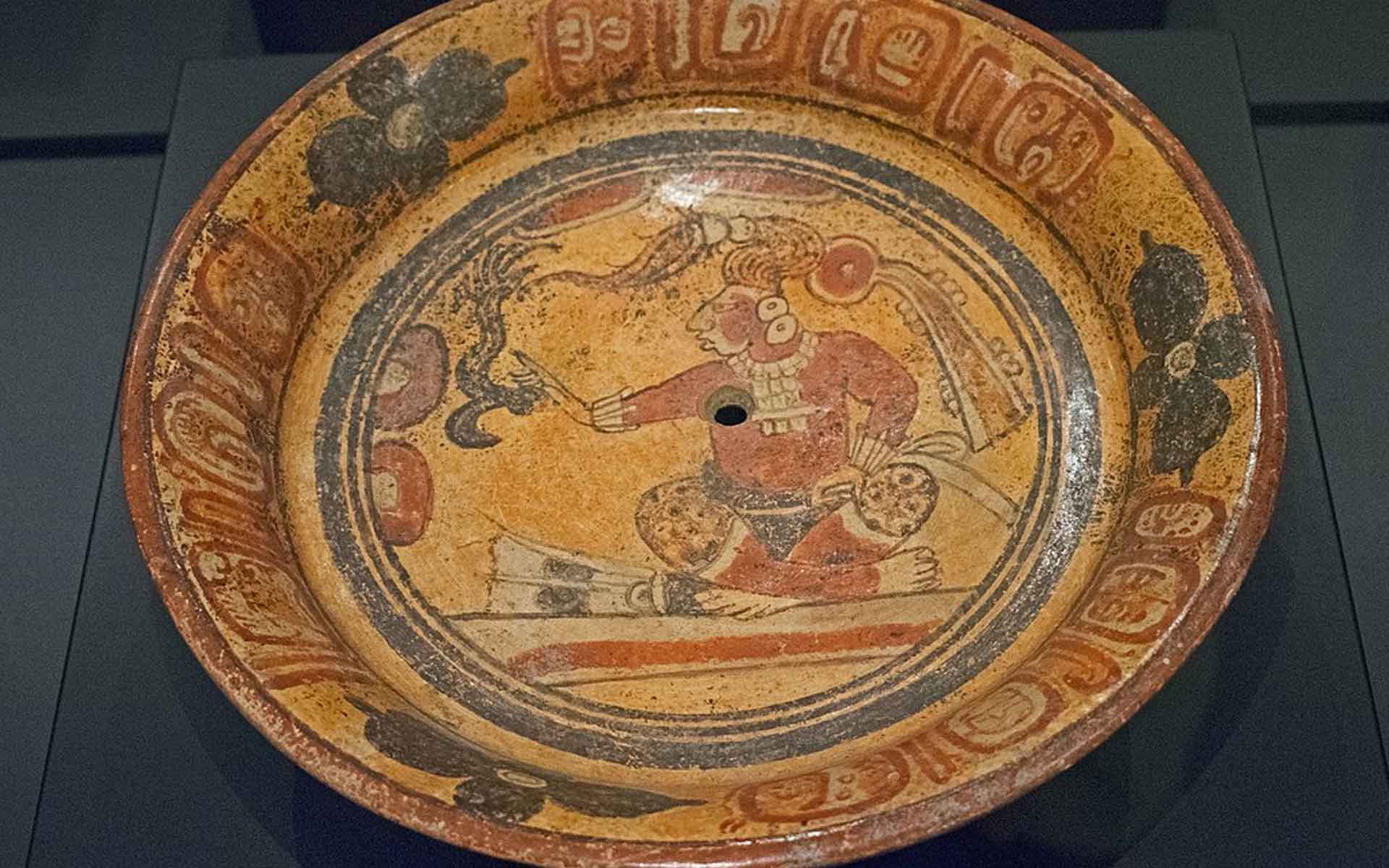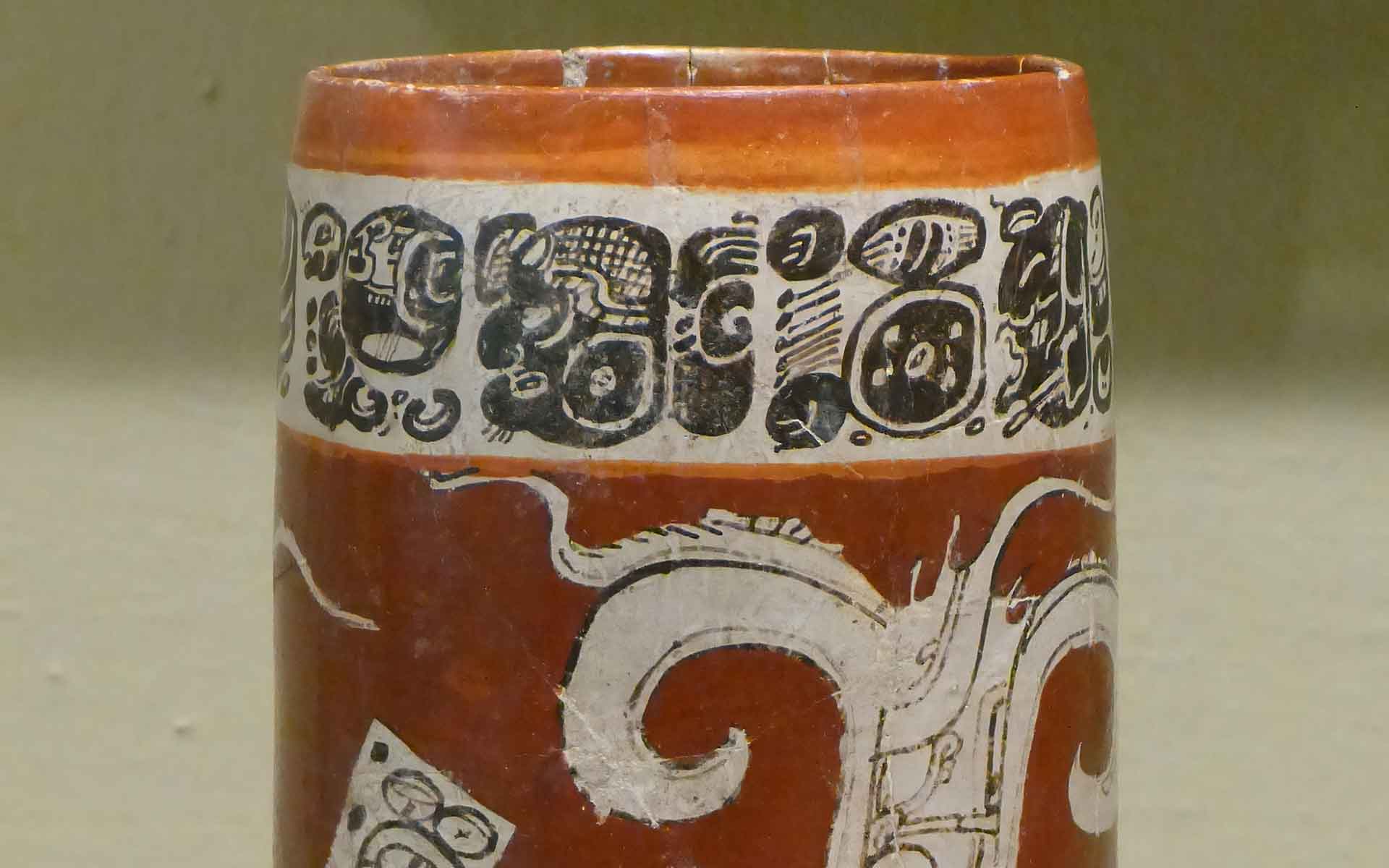
17 Mar Ancient Mayan ceramics
Ancient Mayan ceramics continue to fascinate and inspire potters today. The use of vivid colours, such as orange, along with the intricate and narrative designs makes their style and motifs recognisable across all over the world. I believe we can learn a lot by studying ancient ceramics, especially when it comes to the ancient Mayans. In this article, I’m going to give an overview of the way Mayan’s created and decorated ceramics, followed by tips and inspiration that the modern potter can use in the 21st century.
It is believed that the Mayan’s did not throw their pots on a wheel, instead they used techniques using slabs, pinch-pots and hand building. Clay was gathered from open river systems and mixed with ash, stones and sand to add strength and durability to the clay. Modern Mayan ceramics are still made in this way, continuing this ancient method since it began over 2,000 years ago. The early ceramics mostly focused on the functional necessities for daily life, such as bowls, vases and plates for eating, drinking and storing food. Over the course of hundreds of years, during the classic era (250- 900 AD) Mayan ceramics became a canvas for artists to develop their pottery skills, they experimented with different coloured slips made from clay and other minerals and were able to achieve more colours such as yellow, purple and red. This new usage of colour opened up the possibility for sophisticated designs which eventuated in the production of some of the most stunning ceramics from ancient civilisation. When you look closely at some of the examples on The Metropolitan Museum of Art’s online gallery, you can see just how intricate and precise these designs were.
If you’re interested in experimenting with coloured slips and decoration, 137° Ceramic Art Studio offers ongoing weekly ceramics courses that allow you to try many different decoration techniques.
As the centuries passed, Mayan potters successfully achieved ceramic design as a form of storytelling. Many of their ceramics depict mythological stories of their deities, rituals, the supernatural and included sacred animals and musicians, however these designs didn’t only portray worshipped entities. Ancient Mayan ceramics also recorded scenes of their daily rituals. The Mayans would paint these stories and often use scribing tools to delicately carve the design out of the coloured slips. A lot of time and care was taken to portray both a beautiful and meaningful tale on their ceramics and so much information regarding their culture and lifestyle has been preserved in the decoration of their pottery. Many of the ceramics were adorned with the Mayan calligraphic writing which created the narrative stories that unfolded as the vessel was rotated.
The interaction between form and function is very inspiring; many of the drinking bowls for cocao were decorated with the leaves from the relevant plant, this is said to enhance the flavour of the cocao and elevate the drinking experience. Often during ceremonial feasts and gatherings, the story or poem decorated on the cup or bowl would be told orally, this signifies how ceramics played such a sacred role within the Mayan culture.
How can modern potters draw inspiration from ancient Mayan ceramics?
Artists often experience a lack of inspiration, however, we often forget to use our own stories and memories as material for a new project. There are so many ways in which we can personalise our ceramics, making every piece feel like a favourite item. Revisiting the nature of ancient Mayan ceramics challenges our opinion of the relationship between aesthetic and function and invites us to think about what stories we would ‘publish’ through our own pottery. Think of your design as a form of illustration, this might help you to be more creative and playful. Most importantly, don’t feel like you have to depict a true story, use your imagination and even draw upon dreams, favourite books or songs that inspire you.
If you prefer more simplistic and minimal designs, start by incorporating fewer motifs and focusing on a small selection of symbols to tell your story. Limit yourself to a maximum of 2 or 3 coloured glazes and experiment with how you apply these colours. You can use a very thin brush to apply a coloured slip and create a line drawing design. This method requires a lot of patience and prep. Make sure you plan your design first and assess whether this is going to fit the size of your ceramic piece.
For more complicated designs, you could try the sgraffito technique (Italian word for ‘scratched’). This requires an application of a different coloured slip or underglaze to a piece of leather hard clay. Before you apply the colour, you can lightly trace a design onto your clay, so that you have a guide to work from. Once the underglaze or slip is dry, take a wire stylus tool and begin to remove the colour, exposing the raw clay colour beneath. Once you’re comfortable with sgraffito, you can add several layers of colour to add complexity and variety to your design. Once you have finished decorating, you can bisque fire your piece and apply a clear transparent glaze to finish it.
Angela Colls sells everything you need to try these techniques.
What you’ll need:
• Terracotta clay (of any other clay you prefer)
• Wire stylus tools
• Tracing paper (for your design)
• Pencil and notepad
• coloured slip powders
• Underglaze
• Thin and thick paintbrush
• Transparent glaze
Written by Freya Saleh


